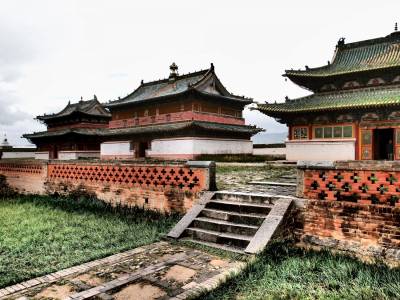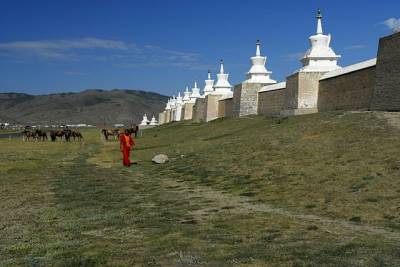12:05 PM kharakhorin erdenezuu | |
|
Kharkhorin - In 1220 Chinggis Khaan built up the capital of Mongolian realm on the fruitful fields along the Orkhon River. This is called Kharkhorin, 373 km from Ulaanbaatar city. Kharkhorin is situated at the lower end of the upper valley of the Orkhon River, which is part if the World Heritage Site Orkhon Valley Cultural Landscape. The area denote the eastern foothills of the Khangai Mountains. Kharkhorin town populace is 8,977 (2003), city region is 20.5 km2. Kharkhorin was an occupied spindled city with high human advancement fabricated by the best specialists and bosses of times long past. However, it was totally annihilated in the wild clashes of the internecine war. Very astonish for the researchers was the revelation of an entombment of Mongolian ladies which dates to pretty nearly the 14th century were likewise two Egyptian covers, a wooden brush and bronze reflect for a situation were discovered shows old relationship between the countries. The establishments of Karakorum's structures are all underground and little has been uncovered, so you need bunches of creative energy when mulling over the grandness of everything. The plain was littered with blocks, destroyed dividers and columns until the mid-16th century. The stone, squares and other building materials from vestiges of Kharkhorin were utilized as a part of the development of this religious community. Erdene Zuu Khiid - The first Buddhist cloister called Erdene-Zuu was based on remnants of Kharkhorin. It was constructed in 1586 at the activity of Avtai khan, most compelling Prince of that time in MongoliaThe cloister possesses a zone encompassed by a stone divider with 108 stupas lining on it. The Erdene-Zuu religious community jelly glorious works of Mongolian craftsmen, painters, cutters, artists, weaves and expert of the XVII-XIX hundreds of years. It had somewhere around 60 and 100 sanctuaries, around 300 gers inside the dividers and, at its crest, up to 1000 friars in living arrangement. Erdene zuu Monastery was obliterated by communists in 1930s amid the political cleanse. Suprisingly, numerous Buddha pictures and statues, tsam covers and thangkas were spared by local people. The cloister was shut until 1965 and reintroduced as a gallery to open. After law based upheaval in 1990, religious opportunity was restored and cloister got to be dynamic once more. The religious community is encased in an enormous walled compound encompassed by 108 stupas. The three sanctuaries in the compound, which were not obliterated in the 1930s, are committed to the three phases of Buddha's life: adolescence, immaturity and adulthood. Dalai Lama Temple was assembled in 1675 to honor the visit by Abtai Khaan's child, Altan, to the Dalai Lama in Tibet. The sanctuary suits statue of Zanabazar and some fine 17th-century thangkas delineating the Dalai Lamas and different defender gods. | |
|
| |
| Total comments: 0 | |


